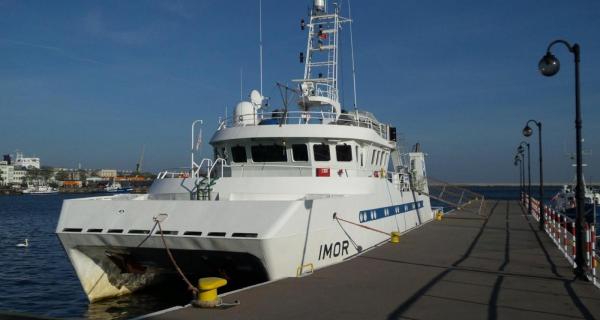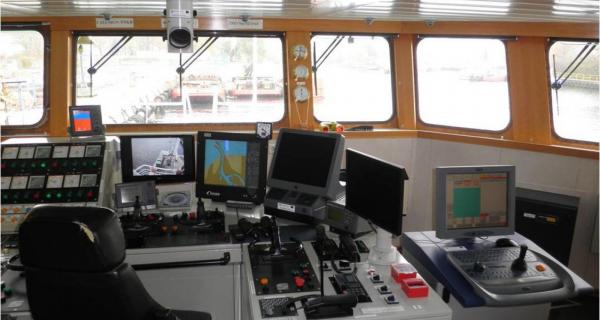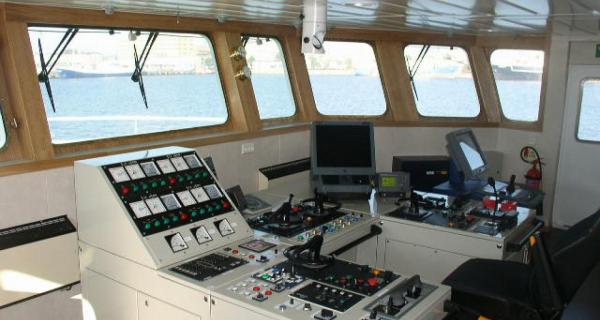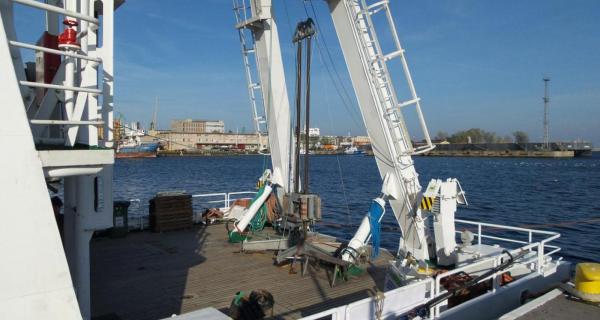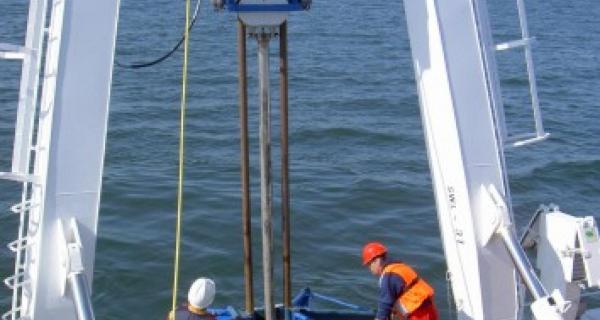Imor

Following the incorporation of the Maritime University into the structure of Gdynia Maritime University, another vessel was added to the University's fleet - the research catamaran IMOR. The ship, its crew, and researchers have a wealth of experience in international research projects, mainly in the Baltic. One of the most exceptional of the ship's expeditions was its involvement in the search for the wreckage of ORP Orzeł in the North Sea.
IMOR began its service as a research ship at the beginning of February 2006. The ship is adapted for research of the coastal zone and shallow floodwaters. The construction of the ship was co-financed by the EU from the European Regional Development Fund. The vessel began its work with geophysical in the Gdańsk Bay, quickly proving its effectiveness and outstanding manoeuvrability.
The ship was designed with a wide range of capabilities, including:
- Measurement of the seabed - for the construction of wind farms, laying of submarine cables and pipes;
- Inventory of mineral deposits, estimating the volume of dredging work;
- Oceanographic testing of water tone and surface, and the near-water layer of the atmosphere,
- Ecological effects of the various forms of human activity on the environment and the biocoenosis of marine waters
A wide body built almost over the entire length of the hulls (except for the aft part) allows for 16 rooms on the main deck, including 12 cabins, as well as a large kitchen, a large mess, a wet laboratory and a sampling room.
Imor is capable of safe navigation in winds of up to 8 ºB. The principal limitation of the vessel is related to its construction - the ship should not sail in high seas (sea state level 5 or above) The ship is however unaffected by waves in sea state levels 1-3, and therefore it can carry extremely precise, technologically advanced measuring equipment. Its extraordinary manoeuvrability (four widely distributed propellers, capable of carrying out 360o rotations), relatively high unit power, and active dynamic positioning system (ALSTOM Kl. I) allow the vessel to move forwards/backwards at a speed of up to 10 knots, up to 2 knots by broadside (left/right by course) - while making complex manoeuvres that cannot be performed by a classic single hull unit.
The operation of the ship is carried out by two five-man crews working in shifts. The crew includes the captain, watch officer, mechanical engineer officer, and two mariners.
The propulsion system used allows for the very economical operation of the ship - the officer in charge may adapt the configuration of the ship power plant to the chosen configuration of the propulsion system and current power demands. The vessel complies with all safety regulations and has been fitted with modern navigation equipment, a Global Maritime Distress and Safety System (GMDSS) and rescue equipment. It also complies with all regulations of the MARPOL Convention.
